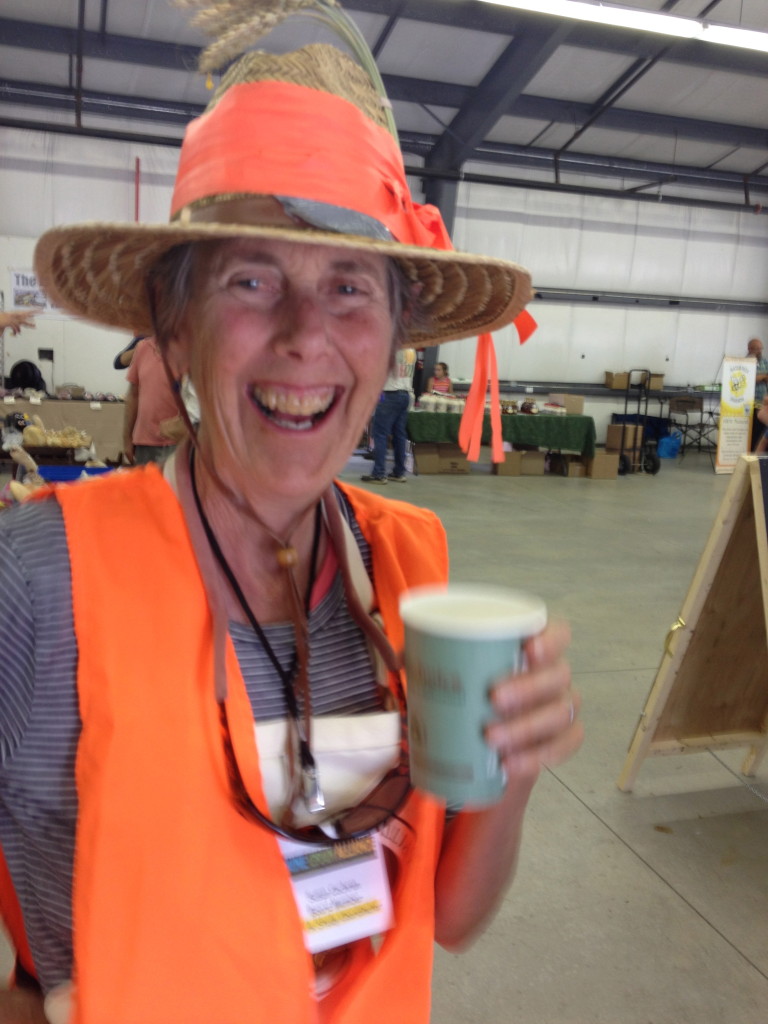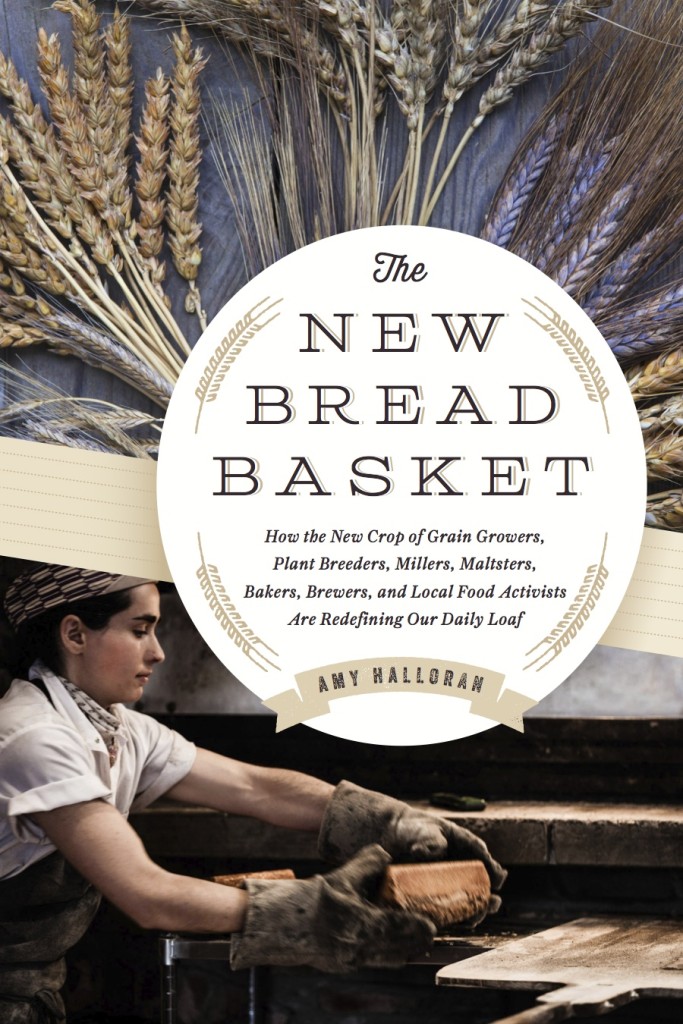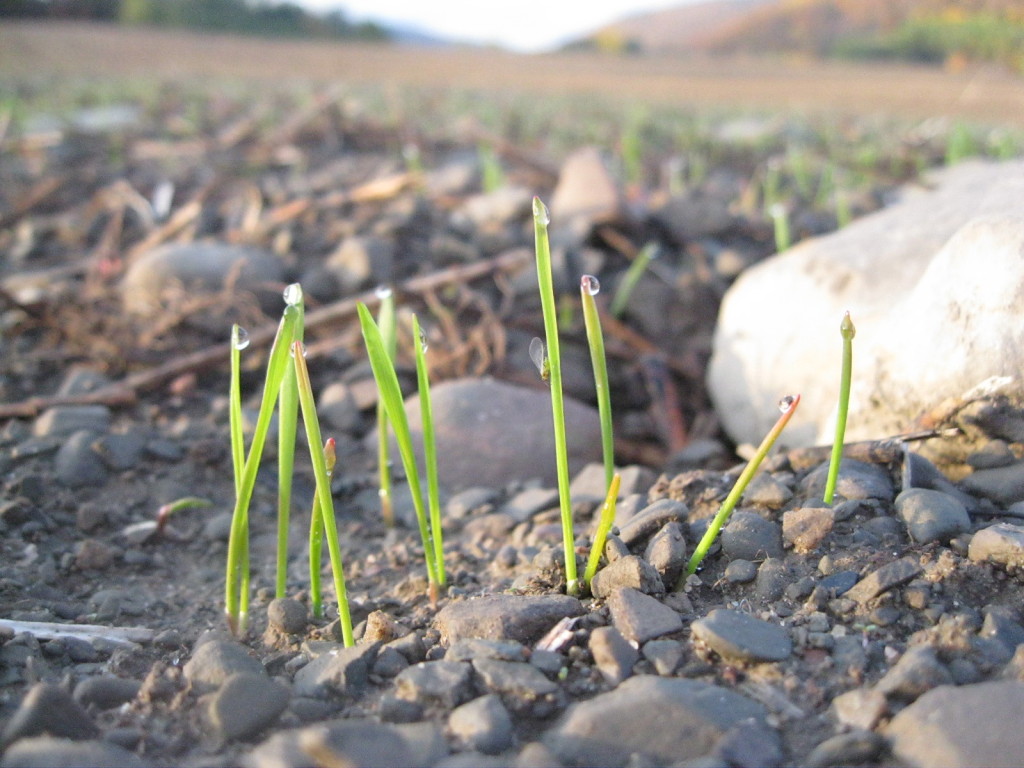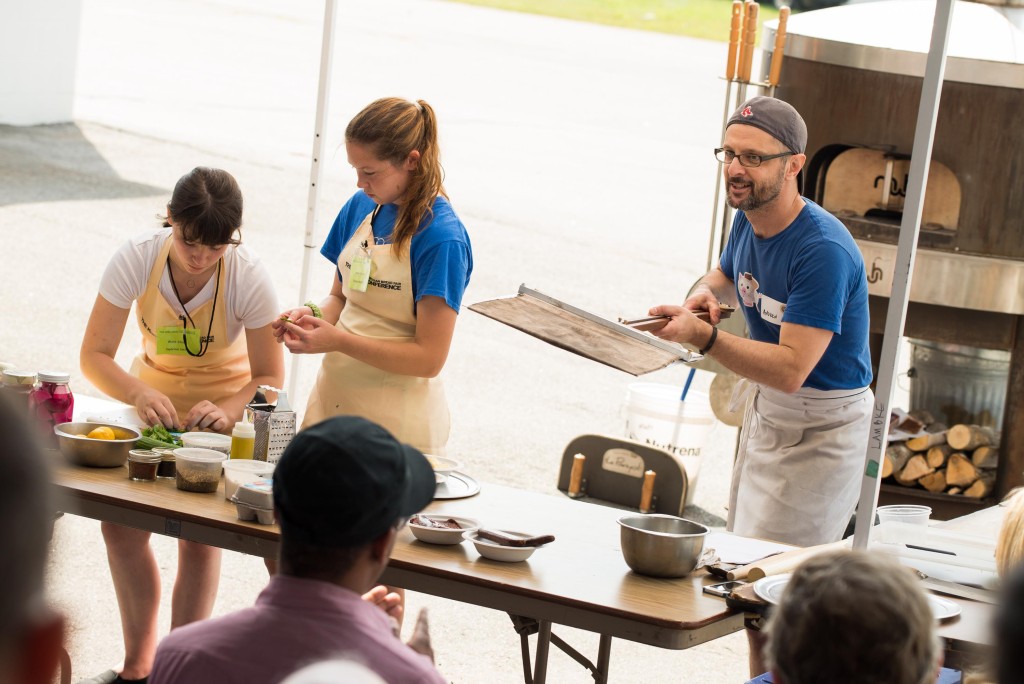
I first heard about the Kneading Conference when I started talking to people about local flour, so it seems appropriate that the first place my book met the world was at this year’s conference, in Maine at the end of July.
Peter Reinhart gave the keynote address, and his words set the perfect stage for a two-day exploration of grains and bread.
“All cooking is transformational, but with bread we take something that was once alive and bring it back to life. This living organism called dough experiences secondary changes in baking. As it dies it transforms into something that we eat,†said the baker and cookbook author. The metaphor of the functions of baking and eat are themes Reinhart explores.
As he was researching his book about pizza, American Pie, he interviewed Chris Bianco, the poster boy of the artisan pizza movement. The man, he said was shy as he tried to get him to describe what was special about his pizza, but eventually admitted, “The secret is me. I can’t bottle that, and I can’t teach my passion.â€
“What made his bread so special was the fact that he was making it,†said Reinhart, who said he also saw passion in action when he visited a cheese steak place in Philadelphia where he used to work.
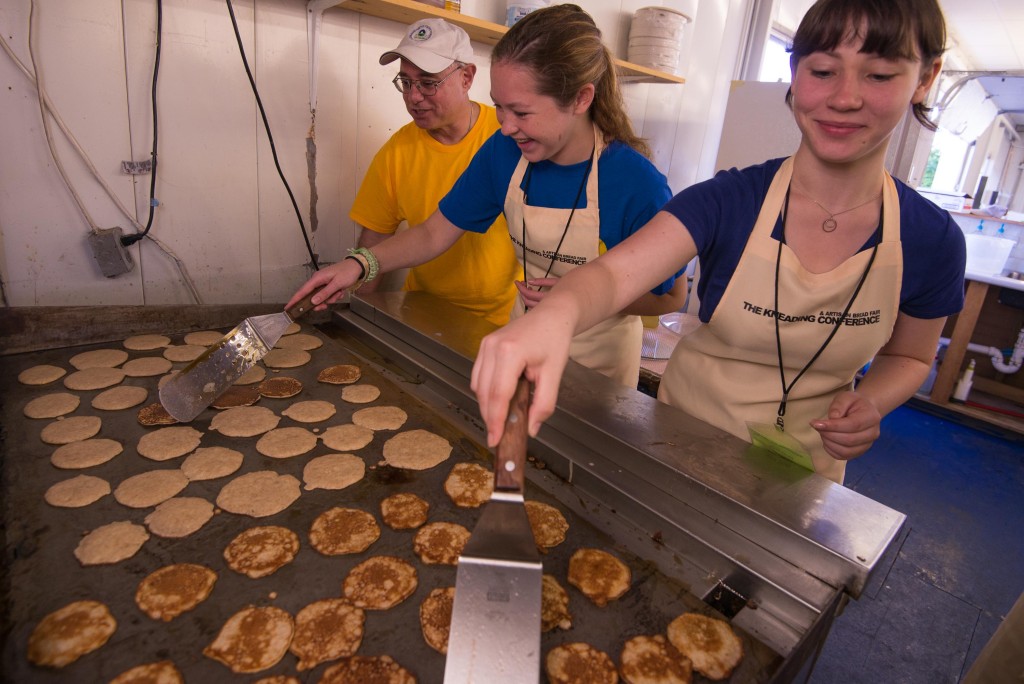
This idea stayed with me like a captivating flavor the rest of my time in Maine. Andrew Janjigian gave a workshop on the Middle Eastern roots of pizza.
“Pizza is the food that got me cooking. I started as a teenager and it is the thing that I have cooked the most,†he said. While his job as senior editor at Cook’s Illustrated doesn’t focus exclusively on pizza, the topic still engages him, especially after he spent two weeks in Eastern Turkey over the winter. The class he taught drew from this experience of seeing Lahmajun, the Armenian flatbread he knew from growing up, in very different, pizza-like context. Seeing the breads served flat and hot, rather than stacked in a bag for home use, Andrew said his long fascination with pizza made sense in a new fashion.
Sam Fromartz spoke about his book In Search of the Perfect Loaf. This book is a great tour of our human history with grains, the science of sourdough, and bakers. “I went to Germany because I wanted to go to a place where whole grains were eaten because they were good, not because we should eat them,†he said. The loaves reflected the diversity of grains, and took him far from the book’s starting point, which was a quest for making the perfect baguette at home. This doesn’t differ drastically from his writing, but I loved seeing a more personal side of the information that was delivered in the book. Plus it was nice to see the author’s face smiling as he told the book’s story.
Steve Gonzalez from SFOGLINI pasta talked about using local grains, and got me curious about making noodles. Noah Elbers from Orchard Hill Breadworks gave a demonstration in shaping pizza dough, and I’ll never forget the slack dough round hanging over his big mitt hands. This is the way he described his hands, noting that people with longer thinner fingers and more slender hands have difficulty shaping with this method.
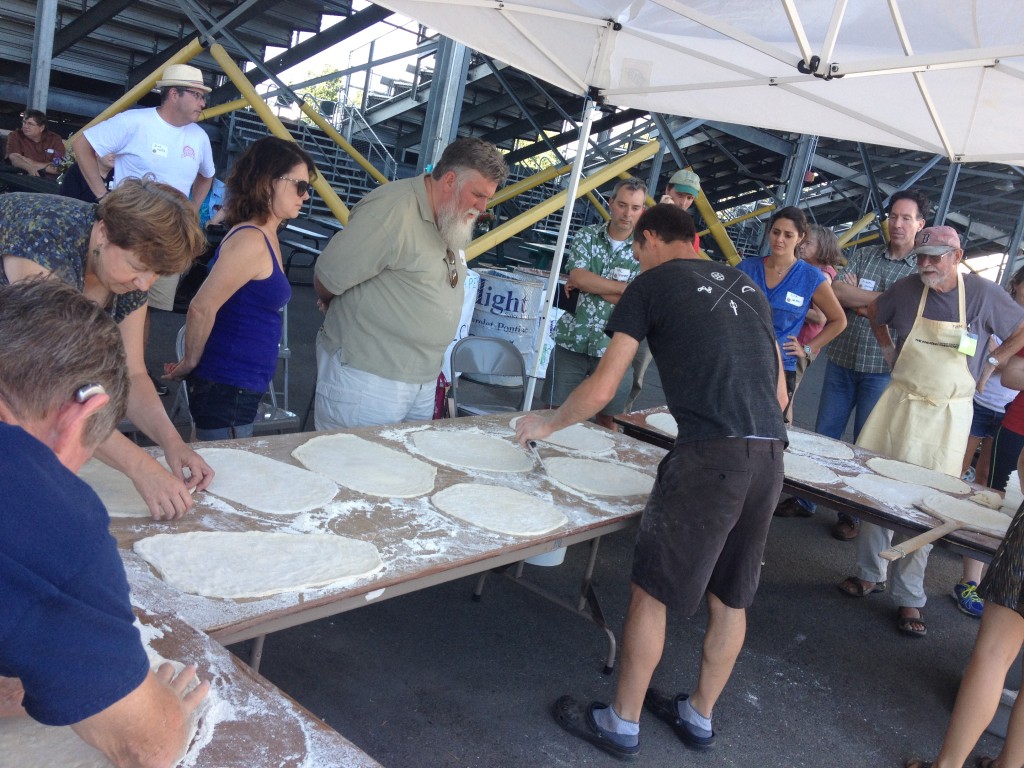
At these events, you never get to see all the presentations, and I’m really sorry I missed most of Richard Miscovich’s class, and all of Ciril Hitz’s workshop on whole grains. He is a very engaging teacher, and the flavor of his spelt bread made me regret my inability to be in two places at once even more. Luckily, I have a recipe to try at home.
I know what I make will be my version, and not even an estimation of his bread. That’s the way food works, as I’ve learned since I came home. I’ve been making ployes, a buckwheat pancake from a mix that Father Paul Dumais gave me. He spoke last year at the Kneading Conference about his family’s Acadian flatbread, and now he’s making a mix. What I make at home is tasty – and rather mystifying, because the buckwheat is yellow – but it doesn’t taste like the one he gave me in Maine. The texture is wrong, on the inside and on the surface. He is missing from his food, but at least I get a reminder.
